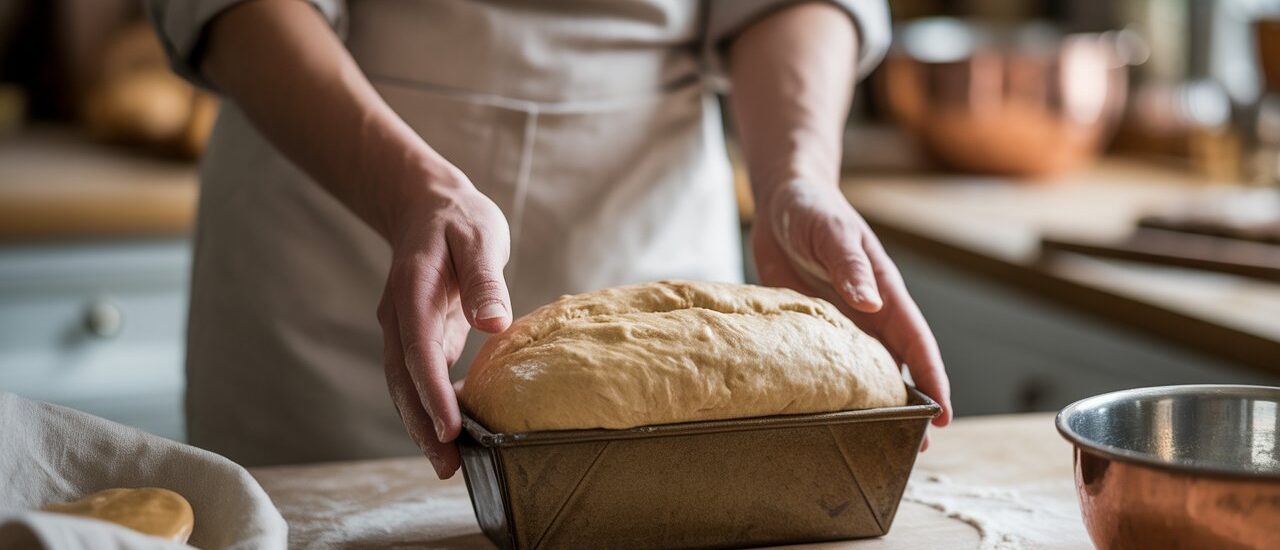In a warm, early morning kitchen, Chef Ayaan prepares his signature banana walnut loaf. The ingredients are simple, but the outcome is anything but – thanks to the support of a precision-engineered loaf cake mould from RaLoaf Bread — Step-by-step (using Rahman Steels loaf mould)
Ingredients
- 450 g bread flour (≈ 3 3/4 cups)
- 300 ml warm water (≈ 1 1/4 cups)
- 100 ml warm milk (≈ 0.42 cup — about 6 tbsp + 2 tsp)
- 40 g granulated sugar (≈ 3 tbsp + 1 tsp)
- 7 g instant yeast (≈ 2 1/3 tsp)
- 8 g salt (≈ 1 1/3 tsp)
- 30 g unsalted butter, softened (≈ 2 tbsp) — or oil
- (Optional) 1 egg for a richer crumb — add with liquids
Mould prep
- Clean the Rahman Steels loaf mould and dry. Because it’s non-stick, lightly grease the interior with a thin smear of butter or oil, or line the base with a parchment sling for easiest removal.
Method — numbered steps
- Warm liquids
- Warm the water + milk together to about 38–43°C (warm to the touch, not hot). Sprinkle the instant yeast and a pinch of the sugar over the liquid; wait 3–5 minutes until foamy (activation). If it doesn’t foam, yeast may be old — replace.
- Mix dry ingredients
- In a large bowl, whisk the bread flour, sugar, and salt to combine.
- Combine & form dough
- Make a well in the flour. Pour in the foamy yeast liquid and add the softened butter (and egg, if using). Mix with a spatula until a rough shaggy dough forms.
- Knead
- Knead the dough on a lightly floured board for 8–10 minutes by hand until smooth and elastic (or 5–7 minutes in a stand mixer with dough hook on medium). The dough should be soft, slightly tacky but not sticky; add tiny sprinkles of flour only if very wet.
- First rise (bulk fermentation)
- Shape into a ball, place in a lightly oiled bowl, cover with a damp cloth or plastic wrap. Let rise in a warm draft-free spot until doubled — typically 60–90 minutes (time depends on temperature).
- Shape for the mould
- Punch the dough down gently to deflate. Turn out and shape into a loaf: flatten into a rectangle, fold short edges toward the center, roll tightly into a log. Pinch the seam closed and tuck ends under so the top is smooth.
- Place in Rahman Steels mould
- Place the shaped loaf seam-side down into the prepared loaf mould. If using a parchment sling, center the loaf on it.
- Second proof
- Cover and let the loaf rise until it puffs to about ¾ to 1 inch above the rim of the mould (about 45–60 minutes). Don’t overproof — if it over-puffs it will collapse in the oven.
- Preheat oven
- Preheat oven to 180°C (350°F). If using convection/fan, reduce to 170°C.
- Bake
- Optional: brush the top with milk or egg wash for sheen. Place the mould on the middle rack. Bake 30–35 minutes until golden brown. Check doneness by tapping the bottom (sounds hollow) or using a thermometer — internal temp ~93–96°C (200–205°F) when fully baked.
- Cool & release
- Remove the mould from oven. Let the loaf rest in the mould 8–10 minutes (no longer—condensation can make the bottom soggy). Then invert onto a wire rack and remove parchment (if used). Cool completely before slicing (30–60 minutes) for best texture.
Tips for best results with your Rahman Steels mould
- Because the mould is non-stick, use only a light grease — too much oil can make the exterior soggy. Parchment slings are foolproof.
- For a shinier crust, brush egg wash (1 egg + 1 tbsp water). For softer crust, brush melted butter right after baking.
- If the top browns too quickly, tent loosely with foil mid-bake.
- Clean the mould gently with warm soapy water; avoid harsh scourers to protect the non-stick finish.
Quick Hack
Sticking: grease a little more, or use parchment sling; chill proofed loaf 10–15 minutes before baking for cleaner release.
Dense crumb: likely under-proofed or not kneaded enough → knead a few more minutes and allow full rise.
Gummy/undercooked center: oven temp too low or loaf removed too early → test with thermometer next time, bake until internal temp ~93–96°C (200–205°F).



